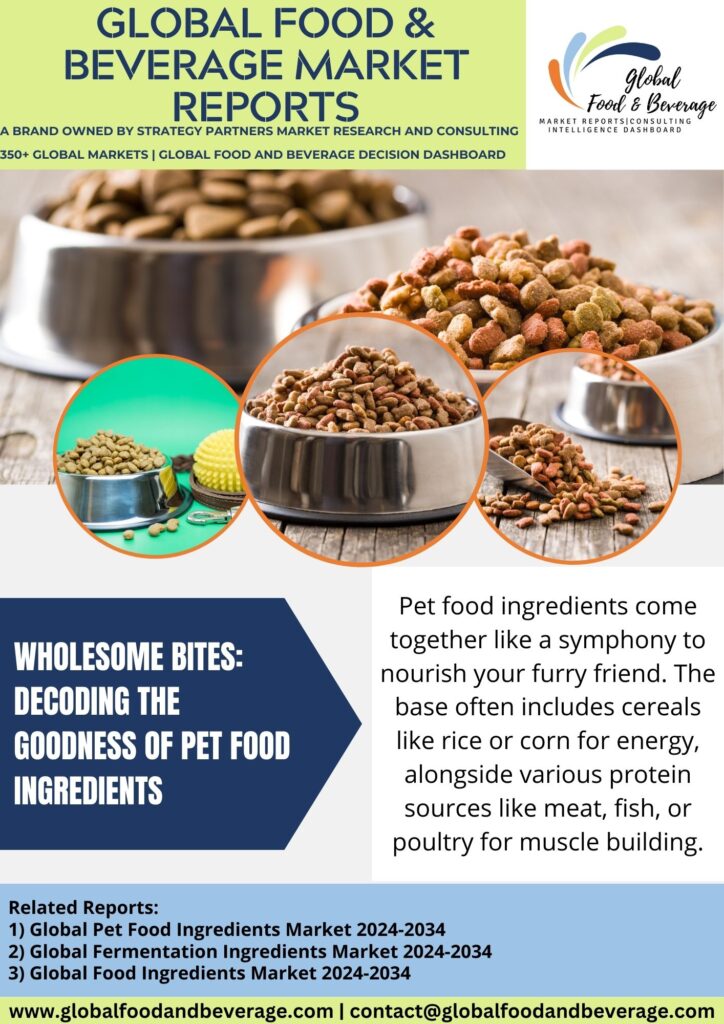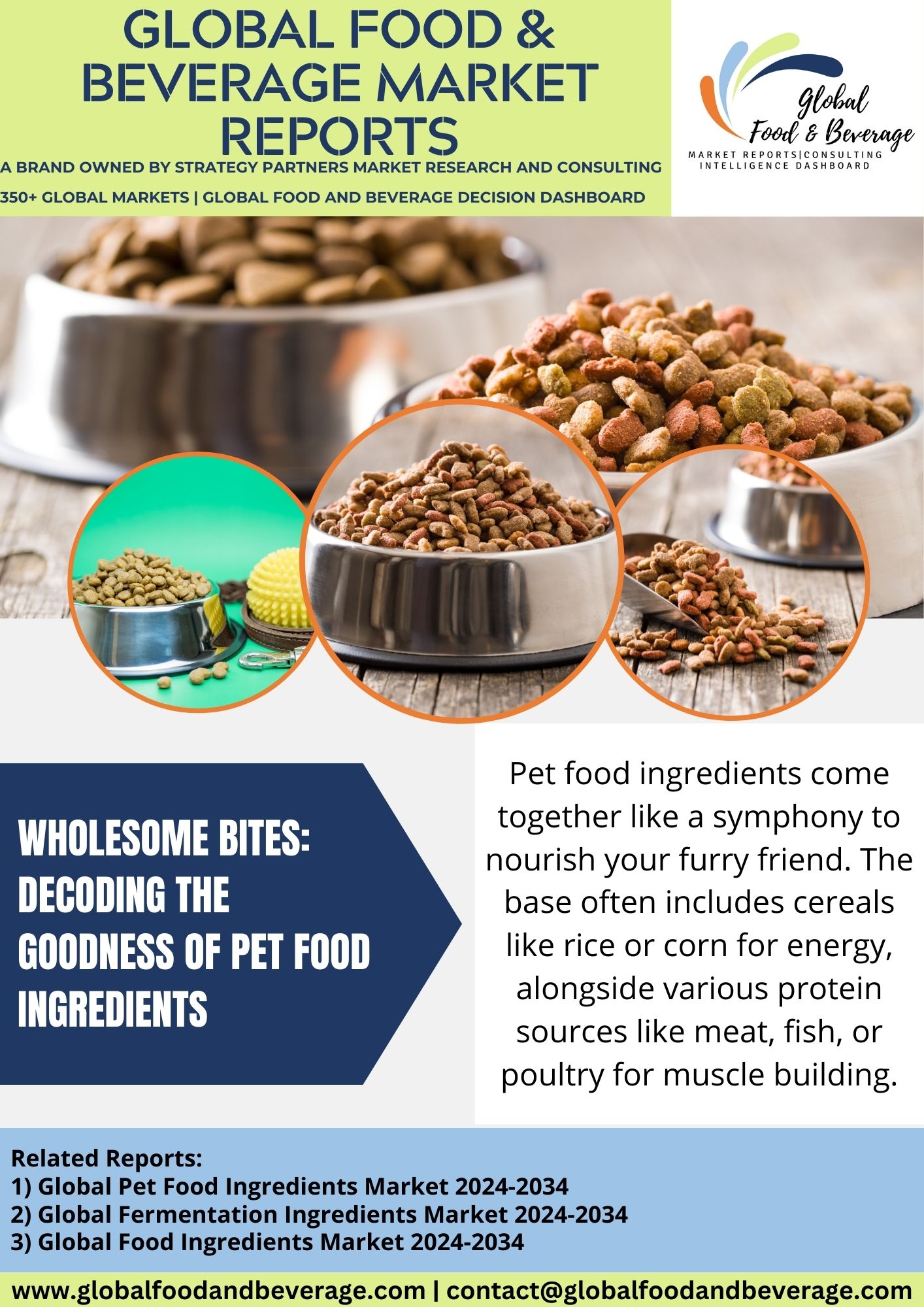Wholesome bites: decoding the goodness of pet food ingredients
Pet food ingredients are carefully selected components that make up the nutritionally balanced diet provided to domesticated animals. These ingredients play a crucial role in ensuring the health, well-being, and longevity of pets, encompassing a diverse range of sources to meet the nutritional requirements of different species.

Protein sources are fundamental components of pet food, as they contribute to muscle development, immune function, and overall vitality. Common protein ingredients include meat, poultry, fish, and plant-based sources like soy and legumes. The type and quality of protein used can vary based on the specific nutritional needs of different animals.
Carbohydrates are another essential group of pet food ingredients, providing a readily available energy source. Grains like rice, corn, and wheat, as well as vegetables and fruits, are commonly used to supply carbohydrates in pet diets. These ingredients contribute to the energy levels required for daily activities and support digestive health.
Fats are incorporated into pet food to provide a concentrated and highly digestible source of energy. Animal fats, fish oils, and plant-based oils are often included to ensure a balanced fatty acid profile, supporting skin and coat health, as well as overall cellular function.
Vitamins and minerals are critical micronutrients that play specific roles in maintaining pets’ health. These can be derived from both animal and plant sources, ensuring that pets receive the necessary vitamins and minerals for optimal growth, development, and disease prevention.
Fiber is an important component for digestive health, aiding in proper bowel function and weight management. Ingredients such as beet pulp, chicory root, and grains contribute to the fiber content in pet food.
In recent years, there has been a growing trend towards incorporating natural and functional ingredients into pet food formulations. This includes antioxidants, probiotics, and botanicals, aimed at promoting immune health, gut balance, and overall well-being.
Pet food ingredient selection is guided by nutritional science and regulatory standards to meet the specific dietary needs of different animals. As pet owners increasingly prioritize the health and quality of life of their furry companions, the pet food industry continues to innovate, exploring new ingredients and formulations to cater to the diverse and evolving needs of pets.
ADVANCEMENT:
The pet food industry has undergone notable advancements in the realm of pet food ingredients, reflecting a growing focus on quality, nutrition, and pet well-being. Technological innovations in ingredient sourcing, processing, and formulation have contributed to the development of premium pet foods that prioritize the health and dietary needs of pets.
Advancements in ingredient quality assurance and safety protocols have become paramount, ensuring that pet food meets rigorous standards for purity and nutritional content. This includes the use of novel ingredients with proven health benefits, such as functional proteins, probiotics, and specialized nutrients.
In response to the increasing demand for natural and minimally processed pet foods, there has been a surge in the use of wholesome, whole-food ingredients. This shift aligns with consumer preferences for transparency in pet food labels and a desire for diets that mimic the nutritional qualities of a pet’s natural diet.
The incorporation of sustainable and eco-friendly ingredients has become a key focus, reflecting broader trends in responsible consumerism. From ethically sourced proteins to environmentally conscious packaging, the pet food industry is embracing practices that minimize its ecological footprint.
Overall, the advancements in pet food ingredients showcase a commitment to elevating the nutritional quality, safety, and sustainability of pet diets, aligning with the evolving expectations of pet owners who view their pets as cherished members of the family.
CHALLENGE:
The pet food ingredients industry grapples with diverse challenges, spanning sourcing, nutritional balance, and consumer expectations. Sourcing high-quality and sustainable ingredients is a continual challenge, complicated by variations in agricultural yields, supply chain disruptions, and environmental considerations.
Ensuring nutritional balance in pet food formulations is critical, and achieving this requires ongoing research and development efforts. Catering to diverse dietary needs, including preferences for grain-free, novel proteins, and limited ingredient diets, adds complexity to formulation processes.
Consumer expectations for transparency and ethical sourcing pose challenges. Pet owners increasingly seek information about the origins and processing of ingredients, demanding clear labeling and assurance of quality. Striking a balance between consumer demands and cost considerations remains a challenge for manufacturers.
Environmental sustainability is an emerging concern. The industry faces pressure to adopt eco-friendly practices in sourcing and packaging. Minimizing the environmental impact of pet food production, including reducing waste and using responsibly sourced ingredients, requires concerted efforts.
In summary, challenges in ingredient sourcing, nutritional formulation, transparency, and sustainability collectively shape the landscape of the pet food ingredient industry. Ongoing innovation and alignment with evolving consumer preferences are essential for addressing these challenges and ensuring the industry’s long-term success.
CONCLUSION:
Ditch the kibble conundrum! Pet food ingredients are shedding their generic cloak and strutting into a vibrant, personalized future. Imagine protein diversity, from insect powerhouses to lab-grown alternatives, catering to every whisker and wag. Nutrient enrichment whispers with vitamins, minerals, and even prebiotics, tailoring every bowl to furry needs. Sustainability strides minimize environmental pawprints, while tech-savvy solutions like AI-powered formulation and blockchain traceability ensure responsible sourcing. Remember, it’s not just food – it’s a celebration of your furry family. Choose wisely, choose sustainably, and savor the future of pet food ingredients, one delicious, responsible scoop at a time. Embrace the wagging revolution, nourish your furry companions, and let every kibble be a purrfect bite of progress.
